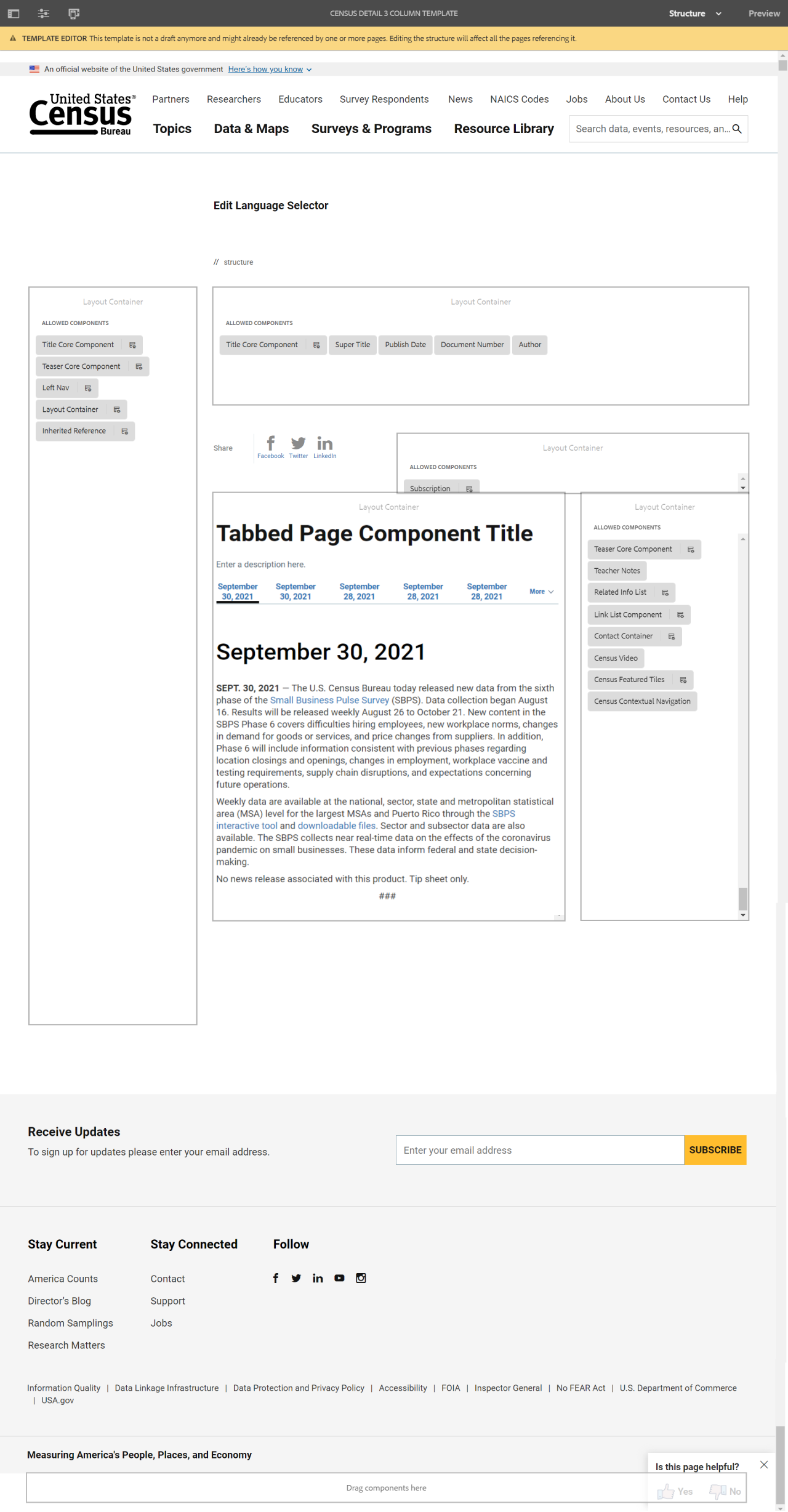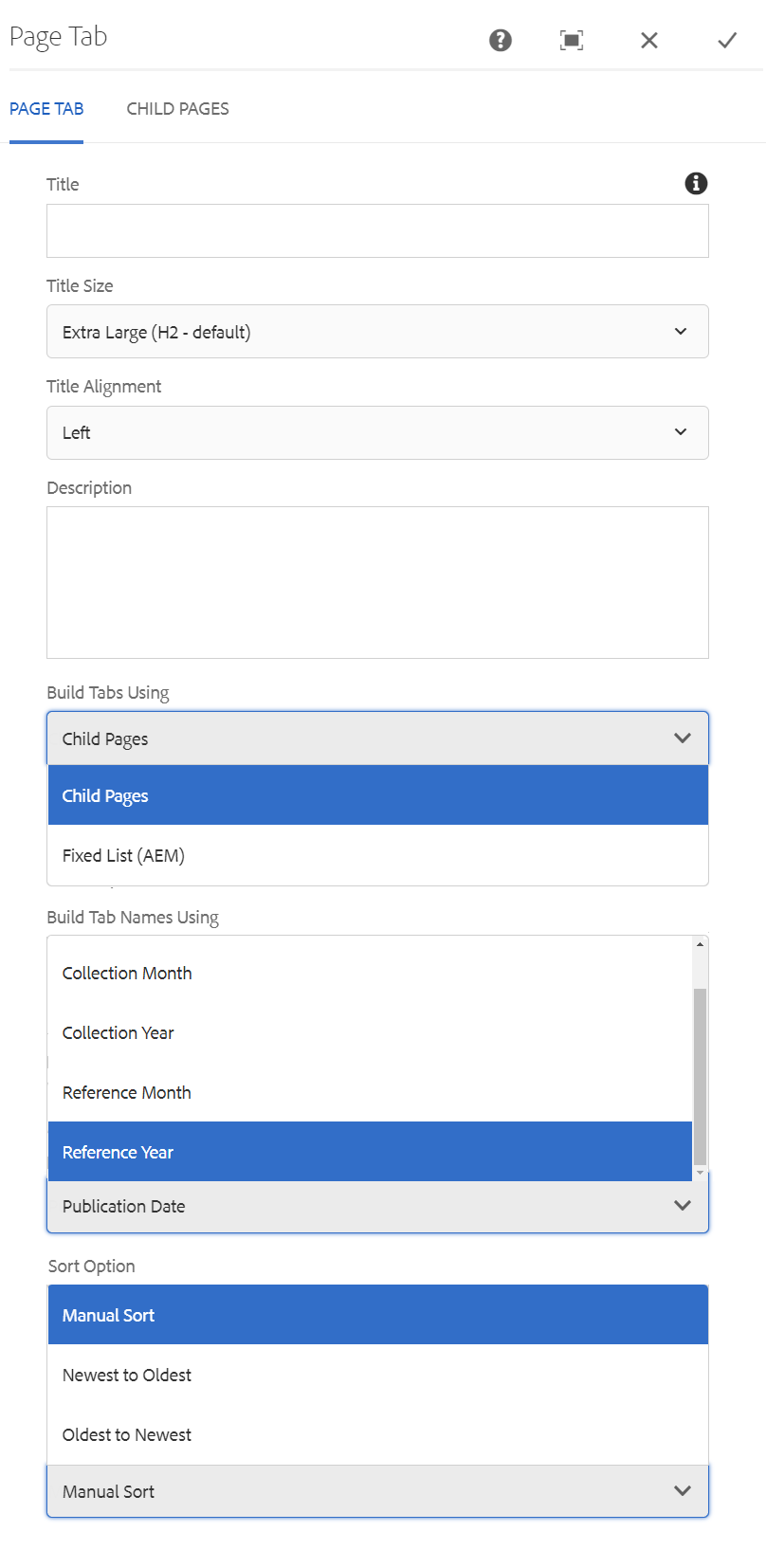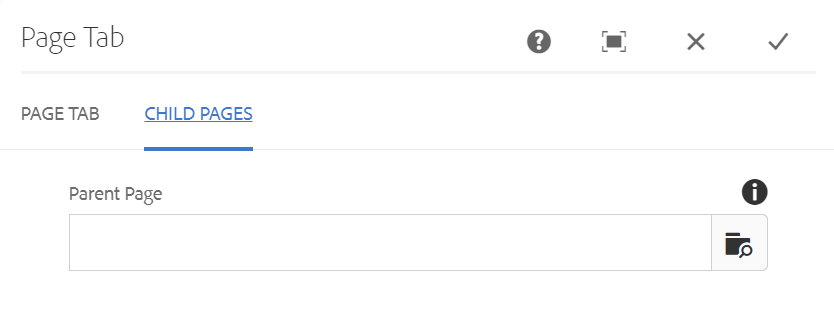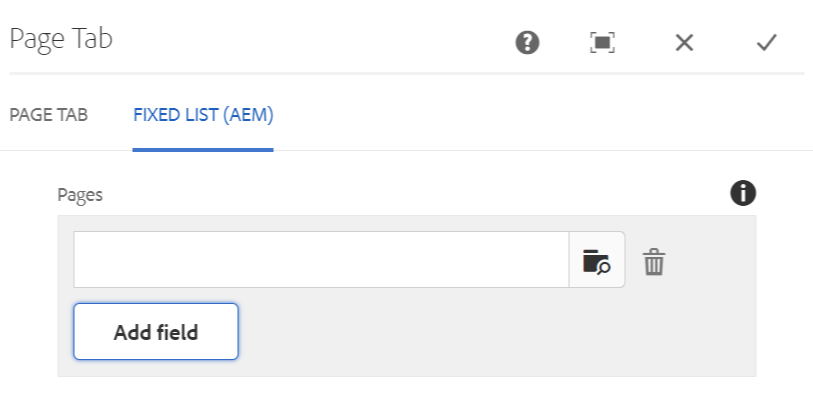Tabbed Page Component
The Tabbed Page Component creates custom tabs to display full page content under each tab. In order to use this component you must submit a Jira ticket to CNMP requesting it be enabled for a specific page.
The Tabbed Page Component displays full page content under each tab. Users navigate between the tabs to access the page content. The component displays one page per tab.
The difference between this component and the tab component, is this component uses the standard sorting choices (building the tab order) of publication date, collection year or month, and reference year or month.
Example
View on public site:
Examples by Template
Census 3 Column

When to Use
Tabbed Page Component is useful for pages designed to display a high volume of previews for related datasets, releases, reports, interactive visuals, and other such pages. Tabs provide a manner by which to organize these related materials.
An author should use the Tabbed Page Component when they have a set of pages, releases, or data that lends to being organized by a preset order to parse items.
Usage
In contrast to the Tab Component, the Tabbed Page Component does not rely on the author to manually order the tabs; instead, it offers preset manners by which to order the tabs. Tabs can be built by collection month/year, by reference month/year, or by publication date and can be sorted manually or from oldest to newest or newest to oldest.
Content authors should use the Tabbed Page Component when they have a set of pages, releases, or data that tends to be organized by a preset order to parse items.
Web Recommendation
Individual pages that are in tabs should have redirects to their tabbed versions. While not required for these pages it is strongly recommended.
This way users can only see the tabbed version of the page. The redirect is found under Page Properties > Advanced tab.
Tabbed Page Component Title
August 12, 2021
U.S. Census Bureau Delivers Data for States to Begin Redistricting Efforts
AUG. 12, 2021 — The U.S. Census Bureau today released additional 2020 Census results showing an increase in the population of U.S. metro areas compared to a decade ago. In addition, these once-a-decade results showed the nation’s diversity in how people identify their race and ethnicity.
“We are excited to reach this milestone of delivering the first detailed statistics from the 2020 Census,” said acting Census Bureau Director Ron Jarmin. “We appreciate the public’s patience as Census Bureau staff worked diligently to process these data and ensure it meets our quality standards."
These statistics, which come from the 2020 Census Redistricting Data (Public Law 94-171) Summary File, provide the first look at populations for small areas and include information on Hispanic origin, race, age 18 and over, housing occupancy and group quarters. They represent where people were living as of April 1, 2020, and are available for the nation, states and communities down to the block level.
The Census Bureau also released data visualizations, America Counts stories, and videos to help illustrate and explain these data. These resources are available on the 2020 Census results page. Advanced users can access these data on the FTP site.
Population Changes Across the Country Since the 2010 Census
Today’s release reveals changes in the size and distribution of the population across the United States. The population of U.S. metro areas grew by 9% from 2010 to 2020, resulting in 86% of the population living in U.S. metro areas in 2020, compared to 85% in 2010.
“Many counties within metro areas saw growth, especially those in the south and west. However, as we’ve been seeing in our annual population estimates, our nation is growing slower than it used to,” said Marc Perry, a senior demographer at the Census Bureau. “This decline is evident at the local level where around 52% of the counties in the United States saw their 2020 Census populations decrease from their 2010 Census populations.”
County and metro area highlights:
- The largest county in the United States in 2020 remains Los Angeles County with over 10 million people.
- The largest city (incorporated place) in the United States in 2020 remains New York with 8.8 million people.
- 312 of the 384 U.S. metro areas gained population between 2010 and 2020.
- The fastest-growing U.S. metro area between the 2010 Census and 2020 Census was The Villages, FL, which grew 39% from about 93,000 people to about 130,000 people.
- 72 U.S. metro areas lost population from the 2010 Census to the 2020 Census. The U.S. metro areas with the largest percentage declines were Pine Bluff, AR, and Danville, IL, at -12.5 percent and -9.1 percent, respectively.
A data visualization released today shows the population change at the county level from the 2010 Census to the 2020 Census. Read more about population change in the America Counts story, More Than Half of U.S. Counties Were Smaller in 2020 Than in 2010.
2020 Census Findings on Race and Ethnicity
The 2020 Census used the required two separate questions (one for Hispanic or Latino origin and one for race) to collect the races and ethnicities of the U.S. population — following the standards set by the U.S. Office of Management and Budget (OMB) in 1997. Building upon our research over the past decade, we improved the two separate questions design and updated our data processing and coding procedures for the 2020 Census. This work began in 2015 with research and testing centered on findings from the 2015 National Content Test, and the designs were implemented in the 2018 Census Test.
The improvements and changes enabled a more thorough and accurate depiction of how people self-identify, yielding a more accurate portrait of how people report their Hispanic origin and race within the context of a two-question format. These changes reveal that the U.S. population is much more multiracial and more diverse than what we measured in the past.
We are confident that differences in the overall racial distributions are largely due to improvements in the design of the two separate questions for race data collection and processing, as well as some demographic changes over the past 10 years.
Today’s release of 2020 Census redistricting data provides a new snapshot of the racial and ethnic composition of the country as a result of improvements in the design of the race and ethnicity questions, processing and coding.
“As the country has grown, we have continued to evolve in how we measure the race and ethnicity of the people who live here,” said Nicholas Jones, director and senior advisor for race and ethnicity research and outreach at the Census Bureau. “Today’s release of 2020 Census redistricting data provides a new snapshot of the racial and ethnic composition and diversity of the country. The improvements we made to the 2020 Census yield a more accurate portrait of how people self-identify in response to two separate questions on Hispanic origin and race, revealing that the U.S. population is much more multiracial and more diverse than what we measured in the past.”
Race and ethnicity highlights:
- The White population remained the largest race or ethnicity group in the United States, with 204.3 million people identifying as White alone. Overall, 235.4 million people reported White alone or in combination with another group. However, the White alone population decreased by 8.6% since 2010.
- The Two or More Races population (also referred to as the Multiracial population) has changed considerably since 2010. The Multiracial population was measured at 9 million people in 2010 and is now 33.8 million people in 2020, a 276% increase.
- The “in combination” multiracial populations for all race groups accounted for most of the overall changes in each racial category.
- All of the race alone or in combination groups experienced increases. The Some Other Race alone or in combination group (49.9 million) increased 129%, surpassing the Black or African American population (46.9 million) as the second-largest race alone or in combination group.
- The next largest racial populations were the Asian alone or in combination group (24 million), the American Indian and Alaska Native alone or in combination group (9.7 million), and the Native Hawaiian and Other Pacific Islander alone or in combination group (1.6 million).
- The Hispanic or Latino population, which includes people of any race, was 62.1 million in 2020. The Hispanic or Latino population grew 23%, while the population that was not of Hispanic or Latino origin grew 4.3% since 2010.
It is important to note that these data comparisons between the 2020 Census and 2010 Census race data should be made with caution, taking into account the improvements we have made to the Hispanic origin and race questions and the ways we code what people tell us.
Accordingly, data from the 2020 Census show different but reasonable and expected distributions from the 2010 Census for the White alone population, the Some Other Race alone or in combination population, and the Multiracial population, especially for people who self-identify as both White and Some Other Race.
These results are not surprising as they align with Census Bureau expert research and corresponding findings this past decade, particularly with the results on the impacts of questions format on race and ethnicity reporting from the 2015 National Content Test.
The Census Bureau uses several measures to analyze the racial and ethnic diversity of the country.
The Census Bureau uses the Diversity Index (DI) to measure the probability that two people chosen at random will be from different racial and ethnic groups.
The DI is bounded between 0 and 1. A value of 0 indicates that everyone in the population has the same racial and ethnic characteristics. A value close to 1 indicates that almost everyone in the population has different racial and ethnic characteristics.
We have converted the probabilities into percentages to make them easier to interpret. In this format, the DI tells us the chance that two people chosen at random will be from different racial and ethnic groups.
Using the same DI calculation for 2020 and 2010 redistricting data, the chance that two people chosen at random will be from different racial or ethnic groups has increased to 61.1% in 2020 from 54.9% in 2010.
In general, the states with the highest DI scores are found in the West (Hawaii, California and Nevada), the South (Maryland and Texas; along with the District of Columbia, a state equivalent), and the Northeast (New York and New Jersey).
Hawaii had the highest DI score in 2020 at 76%, which was slightly higher than 2010 (75.1%).
Information on the racial and ethnic composition of your state and county, and various measures of diversity are available in the following America Counts stories: 2020 U.S. Population More Racially and Ethnically Diverse Than Measured in 2010 and Improved Race and Ethnicity Measures Reveal U.S. Population Is Much More Multiracial.
The Adult and Under-Age-18 Populations
The 2020 Census showed that the adult (age 18 and older) population group grew 10.1% to 258.3 million people over the decade.
“More than three-quarters, 77.9%, of the U.S. population were age 18 and over,” said Andrew Roberts, chief of the Sex and Age Statistics Branch in the Census Bureau’s Population Division. “The adult population grew faster than the nation as a whole. By comparison, the population under age 18 was 73.1 million in 2020, a decline of 1.4% from the 2010 Census.”
Changes to the adult and under-age-18 populations:
- The District of Columbia had the largest population age 18 and over as a percentage of population at 83.4%. Utah had the largest population under age 18 as a percentage of population at 29.0%.
- Utah also had the fastest-growing adult population at 22.8% growth.
- North Dakota had the fastest-growing population under age 18 at 22.1% growth.
Additional age breakdowns will be available in future 2020 Census data releases scheduled for 2022.
As part of today’s release, the Census Bureau provided a new data visualization that highlights the adult and under-age-18 populations across the United States down to the county level. More information is available in the America Counts story, U.S. Adult Population Grew Faster Than Nation’s Total Population From 2010 to 2020.
2020 Census Housing Units
The 2020 Census showed that on April 1, 2020, there were 140,498,736 housing units in the United States, up 6.7% from the 2010 Census.
“While the national number of housing units grew over the past decade, this was not uniform throughout the country,” said Evan Brassell, chief of the Housing Statistics Branch in the Census Bureau’s Social, Economic and Housing Statistics Division. “Counties that composed some part of a metropolitan or micropolitan area saw increases of 3.8%, on average, while counties outside of these areas showed decreases of 3.9% on average.”
State highlights:
- Texas had the largest numeric growth in housing units with 1,611,888.
- The county with the largest percent increase in housing was McKenzie County, North Dakota, with a 147.9% increase.
- West Virginia and Puerto Rico were the only two states or state equivalents that lost housing units.
- There were 126,817,580 occupied housing units and 13,681,156 vacant units in the United States.
Housing unit statistics for the nation, states and counties are available in the 2020 Population and Housing data visualization. More information is available in the following America Counts stories: Growth in Housing Units Slowed in the Last Decade and U.S. Housing Vacancy Rate Declined in Past Decade.
2020 Census Findings on Group Quarters
The U.S. population for group quarters was 8,239,016 as of April 1, 2020. This was an increase of 3.2% over the 2010 Census group quarters population. Group quarters include such places as college residence halls, residential treatment centers, skilled-nursing facilities, group homes, military barracks, correctional facilities, and workers’ dormitories.
“In 2020, the group quarters population represented 2.5% of the total U.S. population, down from 2.6% in 2010,” said Steven Wilson, chief of the Population and Housing Programs Branch in the Census Bureau’s Population Division. “We also saw that college and university student housing was the most populous group living arrangement at 2,792,097, up 10.7% since 2010.”
Group quarters highlights:
- The second-largest group quarters population was correctional facilities for adults at 1,967,297, which decreased from the 2010 Census by 296,305 (13.1%).
- The state with the largest group quarters population was California at 917,932, with the largest share of that population counted at other noninstitutional group quarters.
- The group quarters population in Puerto Rico decreased 1.2% since 2010 to 37,509.
Read more about these results in the America Counts story, 8.2 Million People Counted at U.S. Group Quarters in the 2020 Census. You can also access more statistics in the 2020 Census Demographic Data Map Application.
Quality of Results
All indications show the census results are in line with expectations.
“We are confident in the quality of today’s results,” said acting Census Bureau Director Ron Jarmin.
In keeping with our commitment to transparency, the Census Bureau will release additional operational quality metrics on August 18 and August 25, providing more detail on the conduct of specific operations.
Producing Quality Data While Protecting Anonymity
The redistricting data are the first from the 2020 Census to use differential privacy, a mathematical method that applies carefully calibrated statistical noise to a dataset and allows a balance between privacy and accuracy. More information is available in 2020 Census Data Products: Disclosure Avoidance Modernization and Redistricting Data: What to Expect and When.
In addition to the redistricting data released today, the Census Bureau has released a set of demonstration data that illustrate the impact of the differential privacy production settings on published 2010 Census redistricting data. The Census Bureau released similar demonstration datasets over the course of the new method’s development.
Legacy Data vs. Final Delivery of P.L. 94-171 Redistricting Data
These data released today are in the same format that the 2000 and 2010 redistricting data were provided. The term “legacy” refers to its prior use. By September 30, we will release these same data to state officials with an easy-to-use toolkit of DVDs and flash drives and we will make it available to the public on data.census.gov. The Census Bureau will notify the public in September when it makes these same data available.
Accessing These Data
Data are available in the 2020 Census Demographic Data Map Application through different data visualizations and QuickFacts. Data files are also available on the Decennial Census P.L. 94-171 Redistricting Data Summary Files page and includes the geographic support files, technical documentation and additional support materials needed to access these data.
The Census Bureau has also produced a variety of America Counts stories on population change and distribution, group quarters, the adult population, housing changes, housing vacancy, race and ethnicity and the diversity index. Videos are also available that explain how to access these data and what these data show about the changing nation.
###
Configure Dialog
The configure dialog allows the content author to define multiple tabs. See below for more about the Tab Component dialog.
Tab: Page Tab

- Title – If you'd like to add a Section Title, insert it here.
- Title Size – Size of the title text. (H2 default)
- Title Alignment – Overrides the default alignment of the title text.
- Description – If you'd like to add a description, insert it here.
- Build Tabs Using – Choose between Child Pages or Fixed List (AEM)
- Build Tab Names Using – Choose between Publication Date, Collection Month, Collection Year, Reference Month, or Reference Year.
- Sort Option – Choose between Manual Sort, Newest to Oldest, or Oldest to Newest.
Tab: Child Pages

- Parent Page – Allows you to select a page to list its child pages (i.e., pages nested under the selected page).
Tab: Fixed List (AEM)

- Add Field – Allows you to select specific AEM pages to build tabs.
Developer Resources
Expand the section below to see the Tabbed Page Component HTML output.

